Weather Forecasts for Farmers Innovation Package
Revolutionizing Weather Forecasting for Farmers in Low- and Middle-Income Countries
Launched in 2024, AIM for Scale’s first Innovation Package is focused on generating and disseminating accurate, timely forecasts to help millions of farmers make smarter investments and decisions — from planting to fertilizer application — resulting in higher yields, reduced losses, and stronger livelihoods.
Why Weather Forecasting?
After a rigorous review of potential innovations, weather forecasts for farmers was selected to be the focus of AIM for Scale’s first Innovation Package, having met the following key criteria:
Evidence of Impact
There is evidence that farmers adapt farming practices and investment decisions in response to weather information. For example, the benefits of improving all state-level forecasts of monsoon seasonal rainfall totals in India to the average level of accuracy would exceed $3 billion for farmers over five years.1 Randomized trials in Benin and Colombia estimated annual benefits of $103-$356 per farmer. In Ghana, India, and Pakistan, farmers in communities that received forecasts altered their planting and investment behavior.
1 .Estimates based on Rosenzweig and Udry, 2019 using 2023 USD.
Cost-effectiveness
Investments to produce, procure, tailor, and disseminate high-quality, farmer-centered forecasts would generate benefits that outweigh the costs, perhaps by as much as 100-to-1 in some settings.1
1 . Estimates based on Rosenzweig and Udry, 2019 using 2023 USD.
Credible Pathway To Scale
Efforts to provide weather and climate information to farmers over the past three decades have shown major promise. However, additional funding and global coordination are needed to reach the hundreds of millions of farmers in need of such services.
AIM for Scale is mobilizing support for innovations that address constraints that have historically hindered the dissemination of high-quality weather forecasts in low- and middle-income countries (LMICs). For example, improvements in observation networks can lead to higher quality forecasts by providing data to guide and train prediction systems. These data can also enable the validation of forecast accuracy, further enhancing their usefulness as decision-making tools for actors responsible for information dissemination. Innovations like AI can enable the cost-effective production of timely, location-specific forecasts in areas with limited resources, since current physics-based forecasts are costly to produce and require major computing resources often out of reach for many LMICs. Innovative, user-centered approaches to dissemination can overcome fragmented systems that have led to gaps in trust, usability, and access to information. Finally, generating generalizable lessons from scaling efforts can facilitate local improvements and scalability in other regions.
Demand From Governments
Over 20 governments have signaled to AIM for Scale and partner stakeholders that accurate and timely weather forecasts for farmers is a priority investment for their country.
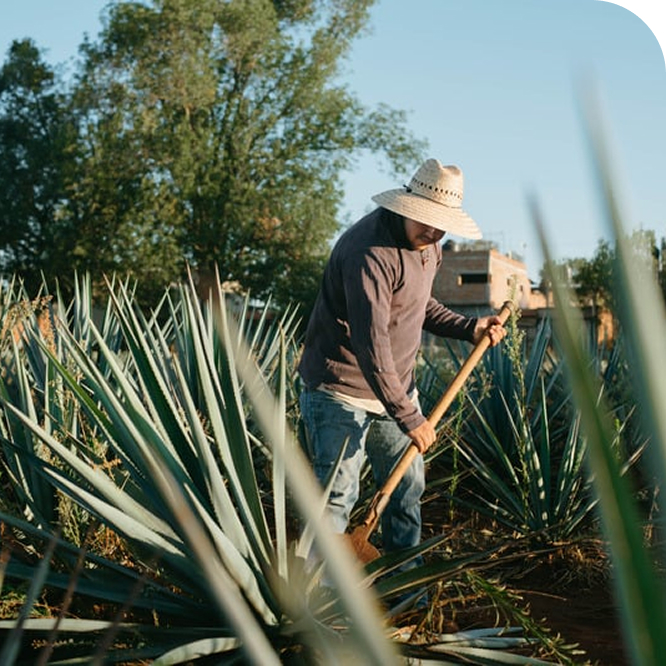
How Do We Plan To Reach Millions Of Farmers?
Despite promising efforts to provide weather and climate information to farmers over the past three decades, significant barriers remain.
To reach hundreds of millions of farmers who could benefit from these services, we need:
- Increased funding and global coordination.
- Better forecast quality and delivery methods.
- Innovative technologies like artificial intelligence (AI) to make weather predictions more affordable and accessible in resource-constrained settings.
The AIM for Scale Technical Panel on Weather Forecasting, in collaboration with the Secretariat, has developed a blueprint for coordinated action to bridge these gaps.
What’s Included In The Innovation Package?
Our work is grounded in three core premises: (1) timely, accurate information is essential for effective decision-making; (2) the way weather forecasts are delivered—both the channel and the messaging—strongly influences how farmers use them; and (3) forecast quality can be significantly enhanced through better data and advanced technologies, including AI. The Weather Forecasts Innovation Package addresses critical investment and coordination gaps across the full value chain of agricultural weather forecasts. It includes both upstream and downstream investments targeting:
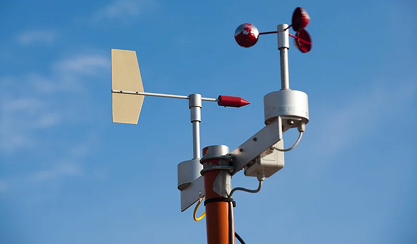
Improve accessibility and availability of meteorological and agricultural data through enhanced observation networks, innovative financing, and strategic partnerships.
* This component is being led by the World Meteorological Organization (WMO)
KEY ACTIVITES
- Mobilize support for countries to generate and internationally exchange essential observation data according to the WMO Global Basic Observing Network (GBON) and to improve access to improved forecasts.
- Mobilize investments to increase the number and improve the placement of weather data collection infrastructure to improve forecast generation and validation at local scales and maximize the gain in forecast skill for the parameters needed in farmers’ decision-making.
- Work with governments to identify necessary agricultural data to inform forecast needs and weather advisories for a functioning agrometeorological system.
- Generate partnerships to induce non-traditional stakeholders to invest in critical public infrastructure, procurement, and maintenance. This could involve a pilot to determine whether co-locating weather stations at cell phone tower sites is a scalable, cost-effective model to increase the availability of observation data leveraging private-sector funding, or partnerships between meteorological services and other stakeholders for the operations and maintenance of observation stations.
TARGET OUTPUTS
- 10-15 additional countries sharing data publicly or through a federated system by 2027.
- USD 50 million in additional investments for data collection infrastructure by 2026.
- Agricultural data and farmer needs identified in 3-4 LMICs by 2026.
A consortium of international partners will support outputs 1,2, and 3, and coordinate public-private partnerships to advance 4. These efforts will initially be tested in 2-3 countries to draw scaling lessons.

Enhance the transparency of forecast performance and incentivize LMIC focused model innovation through a publicly-available benchmarking and validation system that accounts for local needs, building on and expanding ongoing efforts to reach global scale.
* This component is being led by the Gates Foundation
KEY ACTIVITES
- Build a platform to enable users (e.g. governments, private sector farmer-facing organizations, and farmers) to assess weather forecast performance against evaluation datasets with scientific metrics, facilitating comparisons of forecast quality based on region-specific, agriculturally-relevant, and time-sensitive benchmarks. This platform aims to also drive innovation to address accuracy gaps.
- Integrate open or federated data on both meteorology and agriculture into validation of forecast output and benchmarks.
TARGET OUTPUTS
- Prototypic visualization and evaluation system designed for users to evaluate a range of weather forecasts based on regional, agricultural, operational, and meteorological criteria to drive organizational decision-making for adoption, operationalization, and interpretation.
A consortium of partners with expertise in agronomy, computer science, climate science, and social sciences will co-develop these outputs in close coordination with AIM for Scale.
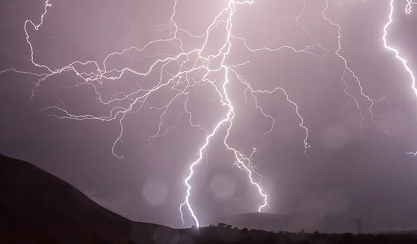
Democratize the production of farmer-centered weather forecasts in low- and middle-income countries (LMICs) by leveraging advances in AI.
* This component is being led by the AI for Climate (AICE) Initiative, University of Chicago and Mohamed Bin Zayed University of Artificial Intelligence
KEY ACTIVITES
- Operationalize AI-based 1-10-day forecasts tailored for high-priority use cases, such as specific crops and locations.
- Pioneer and operationalize AI-based subseasonal-to-seasonal (S2S) forecasts in the service of agricultural needs.
- Develop a training program and invest in infrastructure for the production of agriculturally-relevant AI-based weather predictions in NMHS and agencies responsible for the dissemination of information to farmers. In addition to AI-based forecasts, the curriculum will include training in the communication and co-production of climate services in agriculture for enhanced stakeholder uptake and feedback on products.
TARGET OUTPUTS
- Operational AI-based forecasts for high-priority use cases in 2 countries by 2025, 4 countries in 2026, and 6 countries in 2027, run on NMHS infrastructure
- Pilot training program launched with 2 representatives from 10 countries in 2025.
- Scalable training program rolled out to representatives from 20 countries in 2026 and 30 countries in 2027, designed to account for lessons learned in the pilot stage.
A partnership of NMHS agencies, government agencies, research institutions, and technology companies will lead these 3 outputs.

Strengthen digital systems and co-produce and deliver advisory services, using weather information as an entry point.
* This component is being led by the Asian Development Bank, Inter-American Development Bank, and World Bank
KEY ACTIVITES
- Conduct comprehensive and participatory assessments of farmer needs, public and private agriculture advisory services, data availability for weather and agriculture, and forecasting capabilities across Asia, Latin America, and sub-Saharan Africa. This process will build on previous efforts and take into account varying needs and readiness across countries, as well as gender equity and inclusion considerations.
- Coordinate access to high-quality forecasts in response to country demand to address farmers’ immediate need for climate information.
- Coordinate access to high-quality forecasts in response to country demand to address farmers’ immediate need for climate information.
TARGET OUTPUTS
- Standard assessment template to identify farmer needs, as well as data collection and forecasting capabilities across 8 countries by 2026.
- Monsoon onset forecasts delivered to more than 50 million farmers through government channels in India in 2025.
- Farmer-centered forecasts delivered to more than 100 million farmers in Asia, Latin America, and sub-Saharan Africa in 2026.
Multilateral development banks will lead efforts and work with implementing partners to identify local needs and capabilities, and subsequently provide guidance and support to governments in setting up or strengthening their digital advisory systems. AIM for Scale will coordinate the procurement of high-quality weather forecasts, when needed.
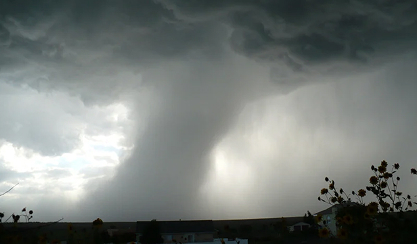
Draw lessons across all five components, and evaluate the effectiveness of forecast dissemination, stakeholder training, and farmer engagement to refine future strategies.
* This component is being led by the Human-Centered Weather Forecasts Initiative, University of Chicago
KEY ACTIVITES
- Test and continually improve dissemination activities to help ensure that farmers understand forecasts and information is achieving maximum benefits. This may include measuring behavior change and will produce generalizable insights of benefits to other countries.
- Test approaches to train agriculture sector stakeholders (from extension workers to government staff and others) on how to best apply and operationalize weather predictions for the benefit of farmers.
- Conduct cost-benefit analyses to assess the value of investing in improvements along the value chain of weather services, including observation networks, benchmarking, AI-based forecast generation, and dissemination.
TARGET OUTPUTS
- Lessons about effective and cost-effective strategies for disseminating forecasts, changing behavior at scale, and complementing weather forecasts with additional advisory services.
- Lessons on how to best train stakeholders in the agriculture sector to operationalize forecasts for the benefit of farmers.
- 1-2 cost-benefit analyses assessing the potential benefits of improvements along the value chain of weather forecasting for LMICs.
Partnerships of research institutions and implementers–including governments, MDBs, private sector, and NGOs–will conduct these activities in countries where dissemination activities are taking place in cooperation with AIM for Scale.
Priority Countries for The Aim For Scale Weather Innovation Package
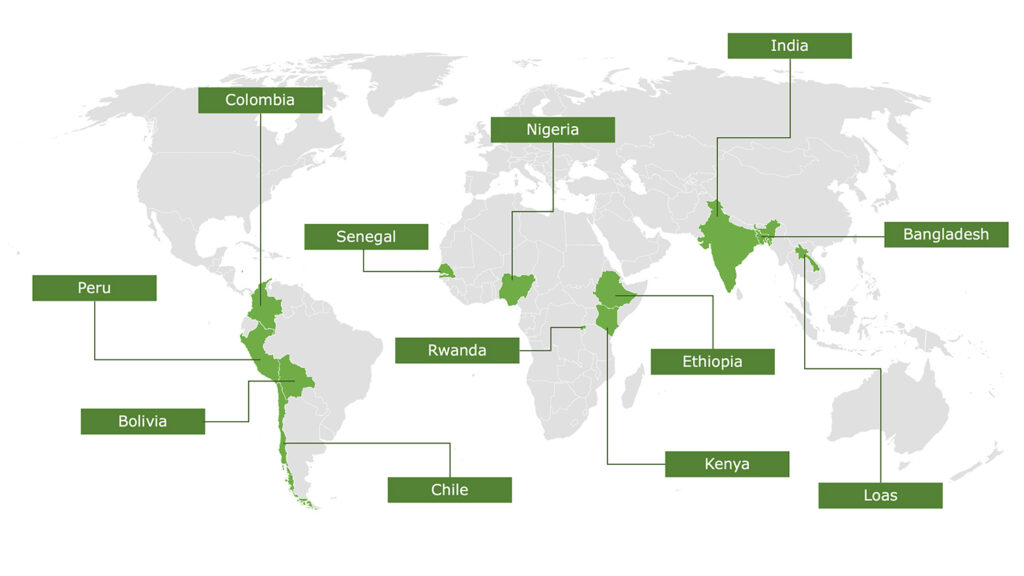
Weather Forecasts for Farmers News and Analysis
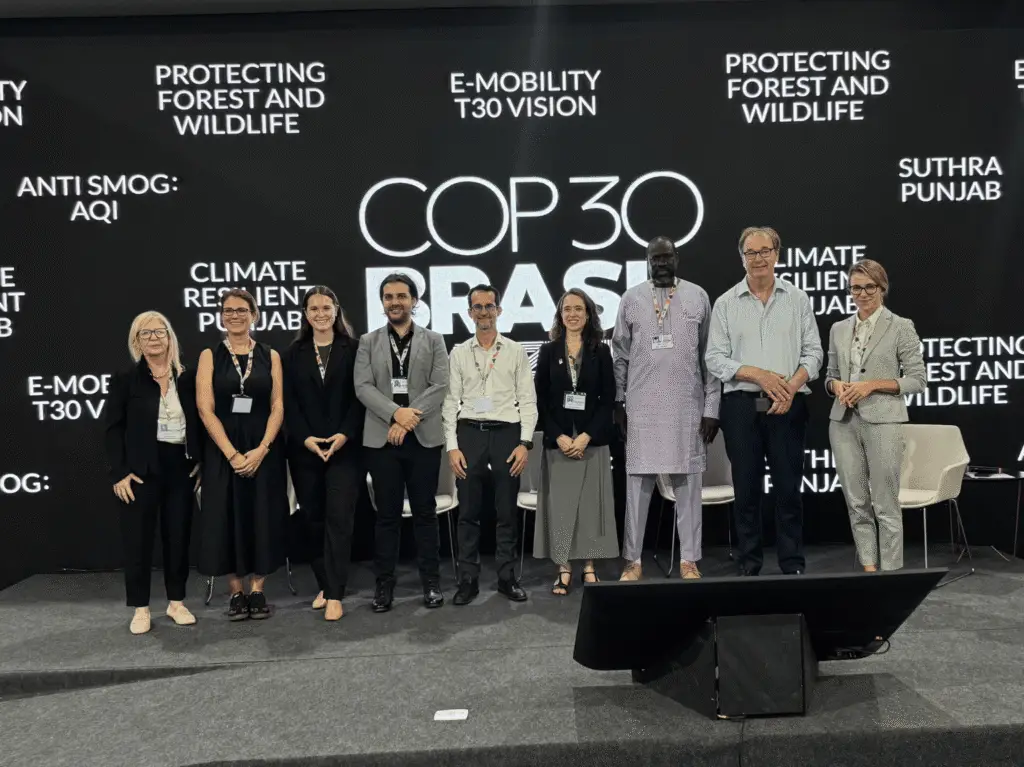
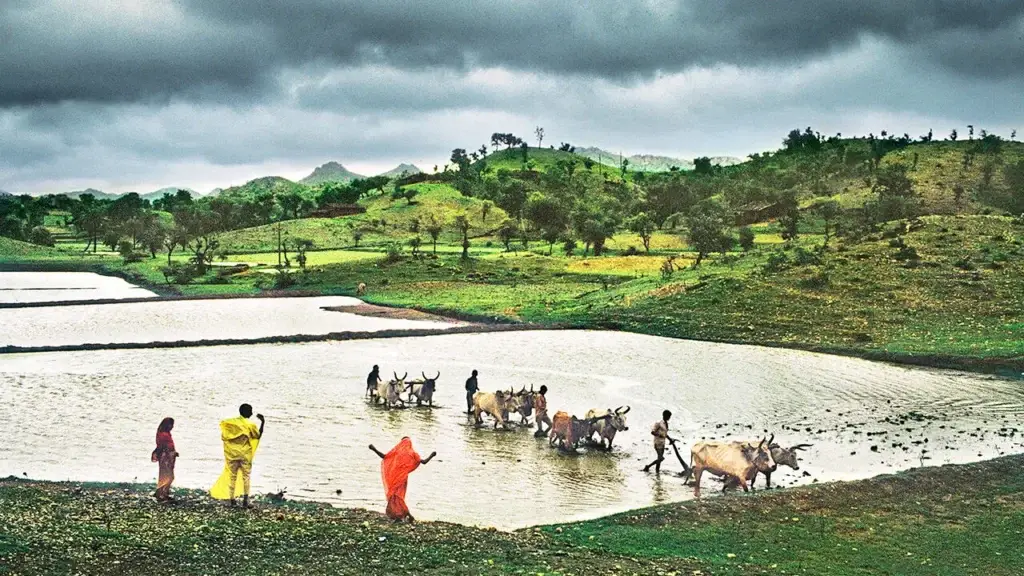
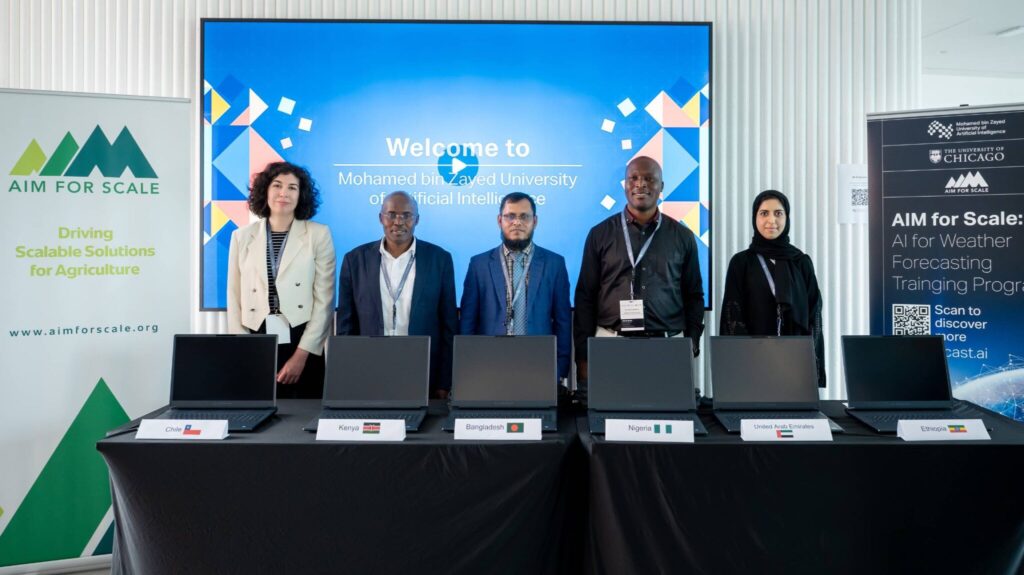
Meet The Weather Forecasts for Farmers Technical Panel
The Weather Forecasts Technical Panel is made up of subject matter experts, including academics who conduct research related to the topic, and implementers—multilateral development banks, non-governmental organizations, and foundations—who work to promote and fund the innovation in the field.

Chair – Technical Panel Assistant Professor at Harris Public Policy at the University of Chicago
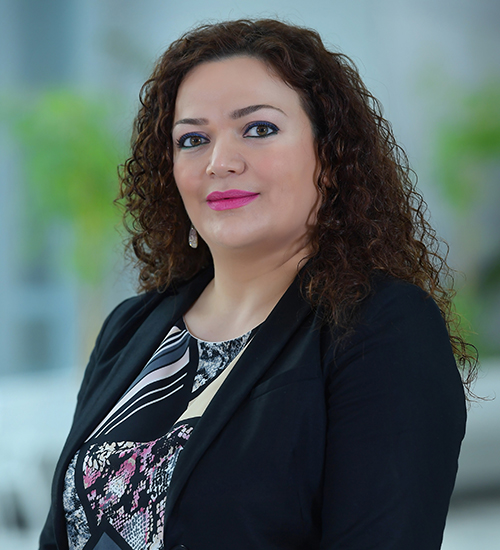
Assistant Professor at Khalifa University
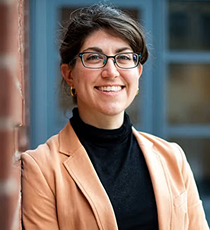
CBF Professor at Friedman School of Nutrition at Tufts University
Erin Coughlan de Perez is the CBF Professor at Friedman School of Nutrition at Tufts University. She directs the Center for Climate and Health glObal Research on Disasters (CORD), global consortium on climate, health, and Anticipatory Action. Erin’s research bridges the gap between climate science, policy, and practice, focusing on the ability to anticipate and manage disasters, including droughts, floods, and heatwaves, before they occur. She researches adoption and effectiveness of adaptation measures in the face of climate change.
Previously Erin was at the Red Cross Red Crescent Climate Centre, where she established a global climate science team and pioneered Forecast-based Financing pilots. She maintains a senior advisor role there, ensuring strong ties to global humanitarian efforts. Erin is also a lead author for the IPCC 6th Assessment Report, for the chapter: Decision-Making Options for Managing Risk. Additionally, she serves as an academic editor for the journal PLOS Climate and serves on the Council of the American Meteorological Society. She holds a Ph.D. from Vrije Universiteit Amsterdam and a M.A. from Columbia University.

Acting director general of African Center of Meteorological Application for Development (ACMAD)
Ousmane Ndiaye is the acting director general of African Center of meteorological Application for Development (ACMAD), prior to that he was leading Senegalese meteorological service at the Agency of Civil Aviation and Meteorology (ANACIM). He has interest in climate prediction and its application in a broad sense: user engagement and ownership, tailoring climate information, private partnership, communication.
Ousmane has worked many years with partners (NGOs, research, extension services, end-users) on how to deliver climate information services from end to end. He is a contributing author of the 6th IPCC report (Working Group I) and a board member of the Global Heat Health Information Network (GHHIN). Ousmane holds a PhD from Columbia University in New York.

Associate Professor at the Department of Geophysical Sciences, the Committee on Computational and Applied Mathematics, and the Data Science Institute, at the University of Chicago
Pedram Hassanzadeh is a tenured Associate Professor at the Department of Geophysical Sciences, the Committee on Computational and Applied Mathematics, and the Data Science Institute, at the University of Chicago. His research focuses on integrating theory, simulations, observations, and machine learning techniques to understand the dynamics and variability of extreme weather events across time scales, from days to decades. He leads the Climate Extremes Theory and Data (CeTD) group and the AI for Climate (AICE) Initiative, which is dedicated to accelerating climate research through interdisciplinary AI applications. He is the co-director of the University of Chicago’s Human-Centered Weather Forecasting Initiative. Prior to joining the University of Chicago, Pedram was a tenured Associate Professor at Rice University and a Ziff Environmental Fellow at Harvard University. His work has been recognized with a NSF CAREER Award and an Office of Naval Research Young Investigator Award, highlighting his contributions to advancing climate science through computational methods. He received his Ph.D. in geophysical turbulence and M.A. in applied mathematics from UC Berkeley.

Climate Change Analyst Data Scientist at World Meteorological Organization (WMO)

Senior Natural Resources and Agricultural Specialist at the Asian Development Bank

Principal Officer – Predictive Analytics at the Gates Foundation
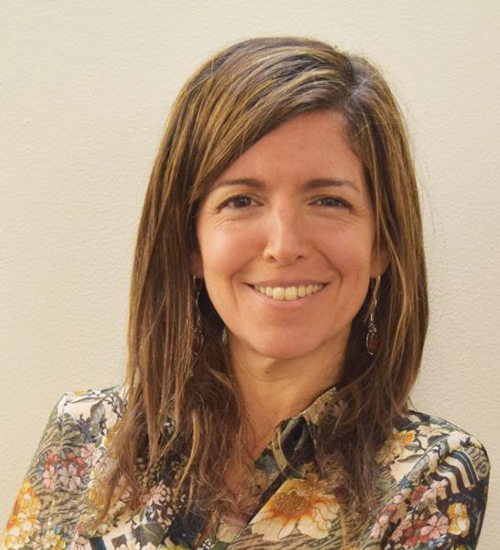
Senior Specialist in Rural Development at the Inter-American Development Bank (IDB)
Romina Ordonez is a Senior Specialist in Rural Development at the Inter-American Development Bank (IDB) based in Chile, where she leads the development and implementation of agriculture and rural development projects in Chile and other countries in Latin America. Her expertise spans the design, supervision, and evaluation of development projects, with a focus on sustainable rural development. Previously, Romina worked as an economist at IDB Invest, concentrating on the agribusiness and tourism sectors. Her work included measuring the development impact of private sector operations, designing and implementing advisory services and impact evaluations. She holds a Ph.D. in Agricultural Economics, a Master in Public Policy, a bachelor’s degree in Economics, and a technical degree in Journalism.